If you are looking for some plants to grow with your peonies this season, you’ve landed in the right place! Peonies are a garden favorite, and with their beautiful blooms, it’s easy to see why. In this article, certified master gardener Laura Elsner examines her favorite companion plants to grow with peonies this season.
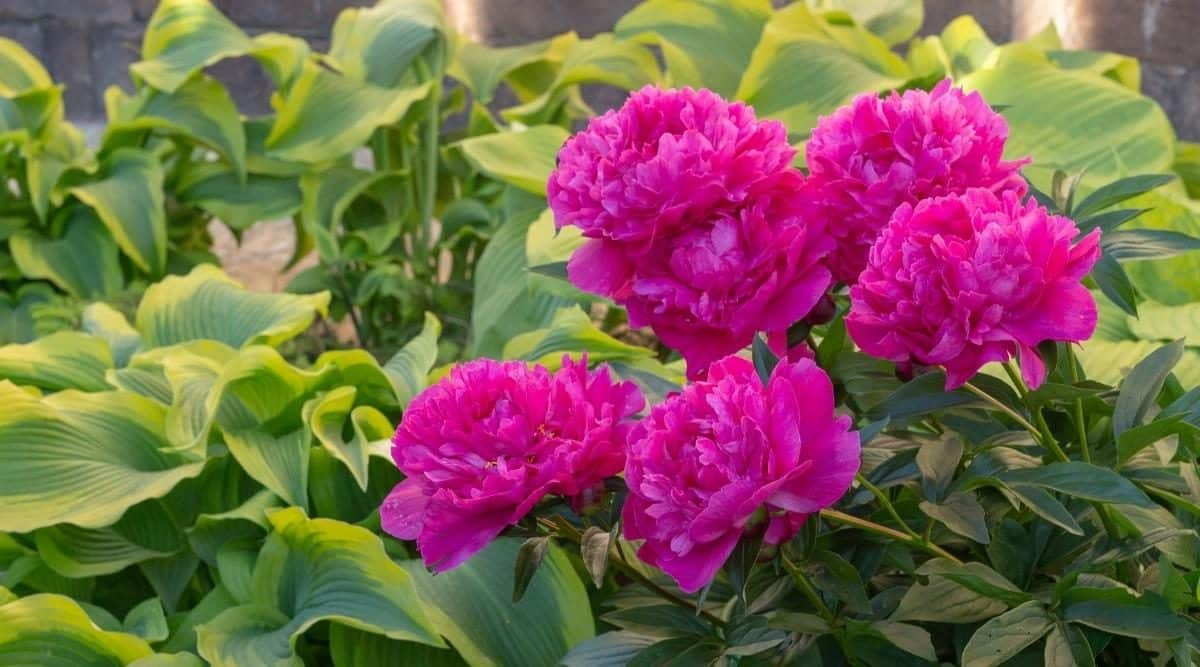
Peonies are the pride and joy of many gardeners. Their massive, fluffy flowers are hard to beat! I especially love the look of them nestled into a garden bed or sharing space in an attractive container. They are so easy to layer together with other plants to create a lovely mosaic of blossoms all throughout the garden season.
When I pair plants together I think about what I am trying to achieve in the garden. Do I want a companion whose blooms will accent the other plant? Do I want one to bloom and the other quietly wait its turn? Am I playing with the structures and heights of the plants? There are many aspects to consider when pairing plants together.
Take the time to think about bloom time, the bloom colors, foliage texture and color, and the height of different plants and how they will play off one another in a garden setting. There are also many different types of peonies to consider when pairing with other plants. Keeping all those aspects in mind, here are some of the best peony companions to mix and match within your garden.
Allium
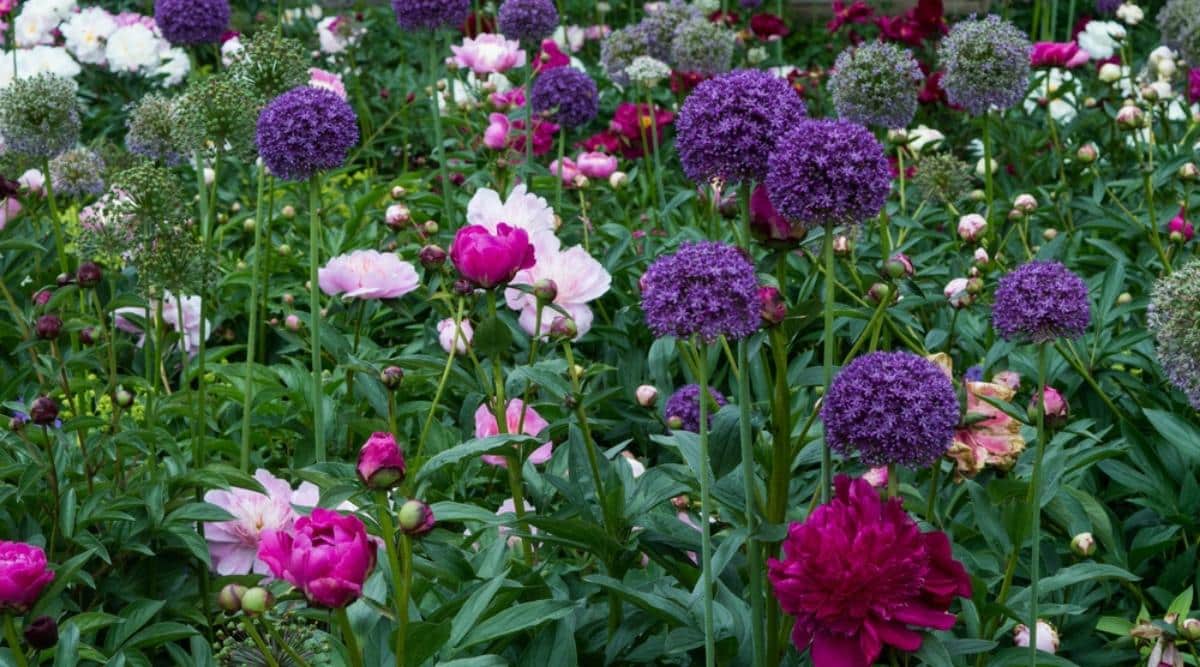 Allium blooms with magnificent large purple flowers in the shape of a ball.
Allium blooms with magnificent large purple flowers in the shape of a ball.
Full disclosure, I am obsessed with allium. I plant them in all my client’s gardens in the fall. One of the most underrated plants in my opinion. They are so simple to grow but provide a huge spring impact. Most perennials take three years to establish, but allium looks great the season after planting.These flowers bloom before peonies, so it’s nice to plant the bulbs in and amongst peonies. The allium will grow upward and sprout a big purple (usually, but can be white, pink, or yellow, depending on the variety) lollipop.
Alyssum
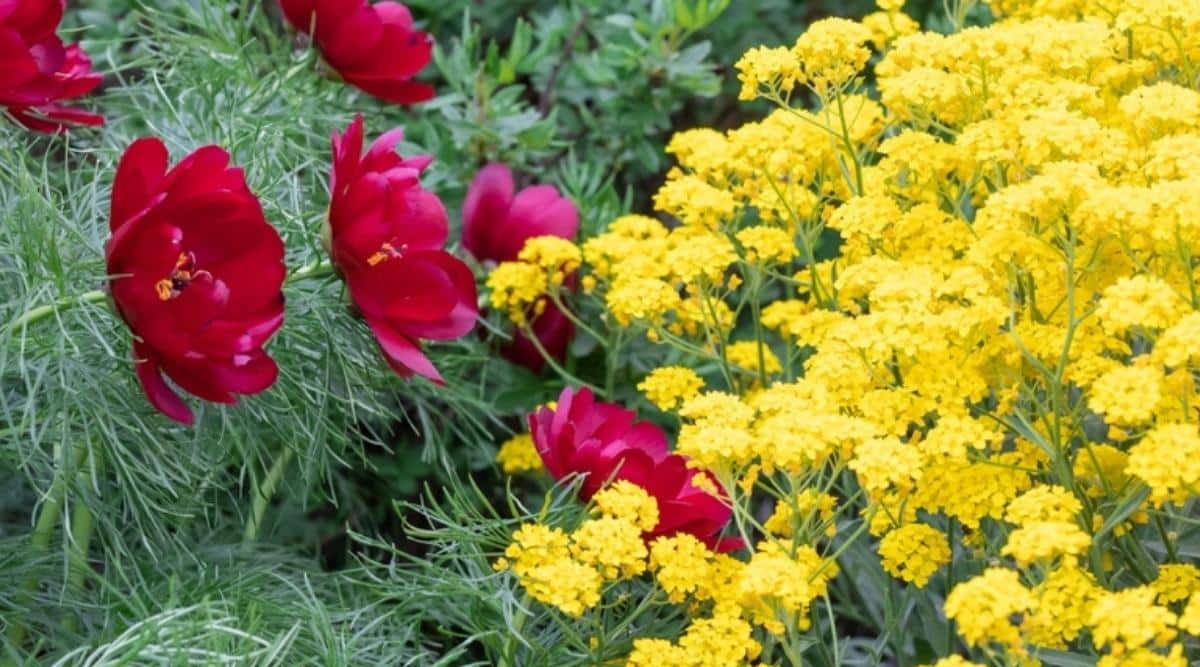
If you want a classic cottage garden, this is a perfect combination. It is a low-growing, annual plant that is bursting with fluffy sweet smelling flowers. I like a long sweeping border of it outlining a garden bed. It is a perfect outline for underneath big peony plants with their large solid blossoms.
Annabelle Hydrangea
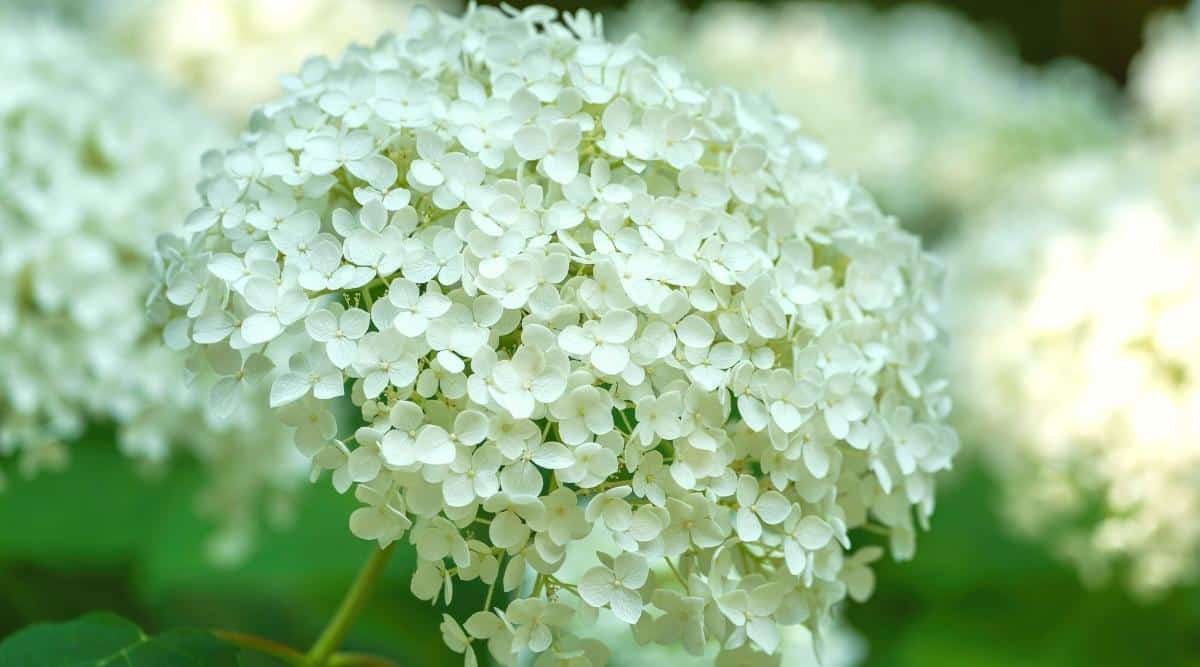
Annabelle hydrangea is a late-season smooth hydrangea. But it gets fairly big and bushy, with large light green rounded leaves. The flowers are usually only starting to form when the peony is in bloom. They make a perfect leafy backdrop to the beautiful blooming peony. Later on, the hydrangea will steal the show.
Columbine
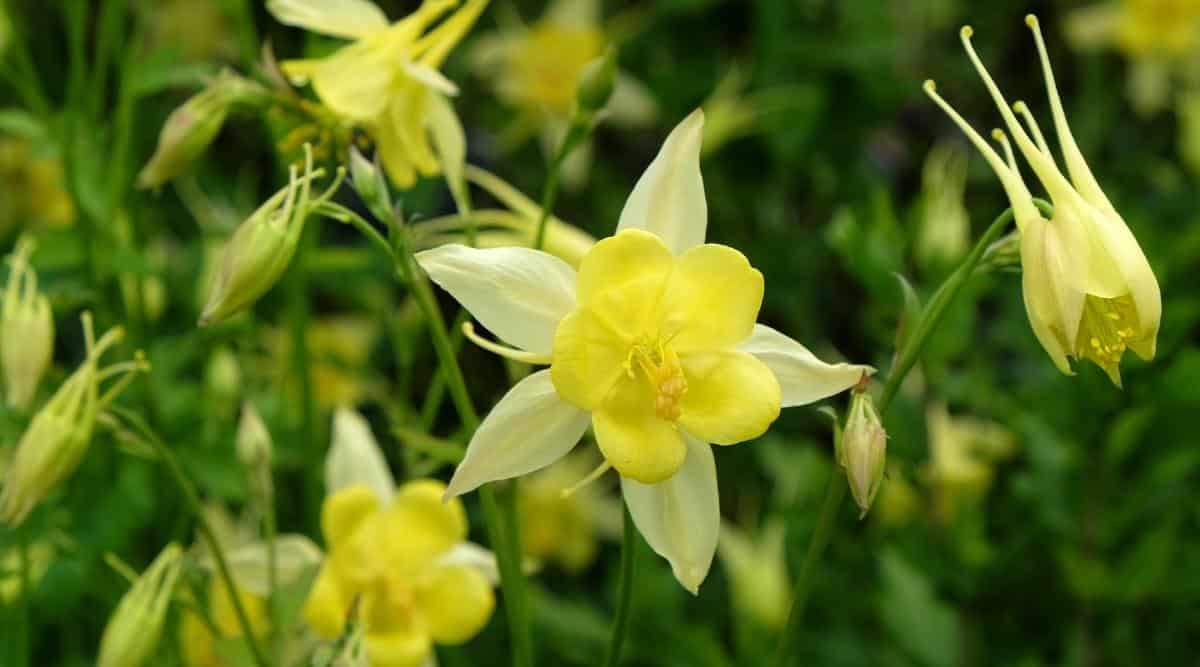
Peonies make great anchor plants in a garden. They are reliable, they grow larger over time (if they’re in the correct conditions) and will always stay put. With peonies firmly situated in the garden adding structure and stability to your garden, you can start playing with the garden nomads.
This of course depends on your garden aesthetic. If you are into clean and orderly lines, plant only plants that stay in their place. But if you like a blur of color and textures, adding flowers that wander and fill spaces is just the thing.
This brings me to the perfect garden nomad, columbine. Columbine is a semi-aggressive garden flower. It self-seeds and wanders around a garden. If they pop up in places they shouldn’t, they are easily pulled out.
Coneflower
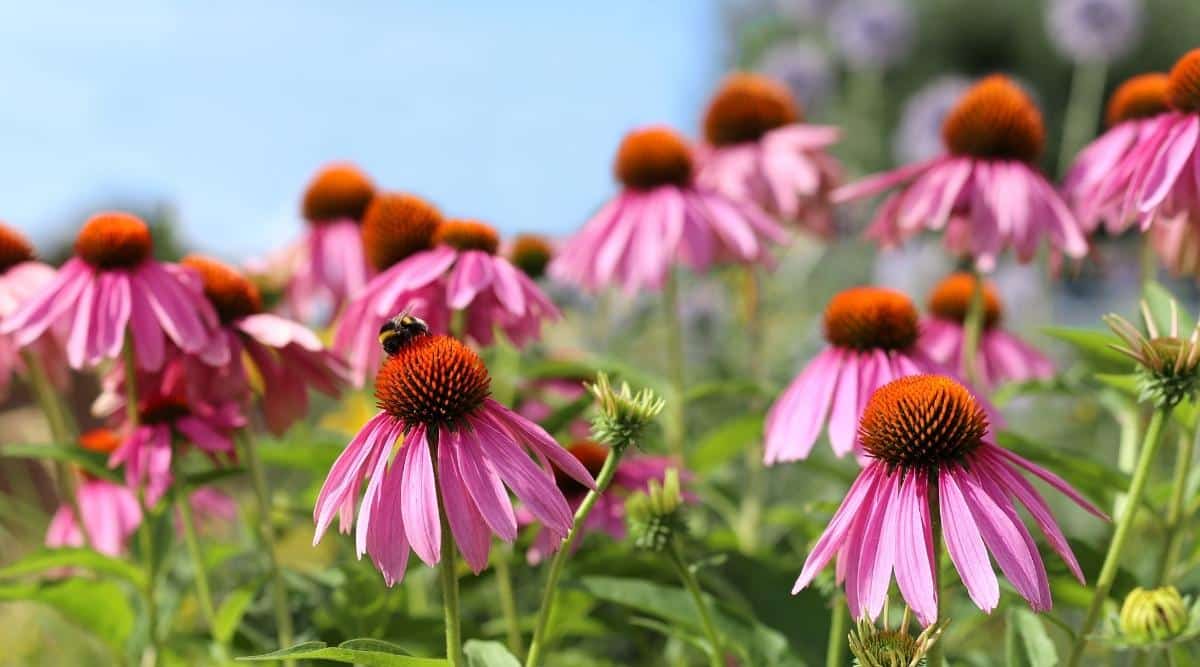
Coneflowers are an excellent option for pairing with peonies if you are looking to layer your garden with blossoms. Peonies’ bloom time is relatively short and it happens early in the season. While I do like strategically stacking some flowers together so they bloom in unison (like salvia and peony), I also like stacking perennials so there is always something in bloom.
If you only have plants that bloom when the peonies do, the big peony blossoms almost get lost in the clutter. I don’t mind having a flower or two to accent them, but too many blooms can appear chaotic.
Creeping Jenny
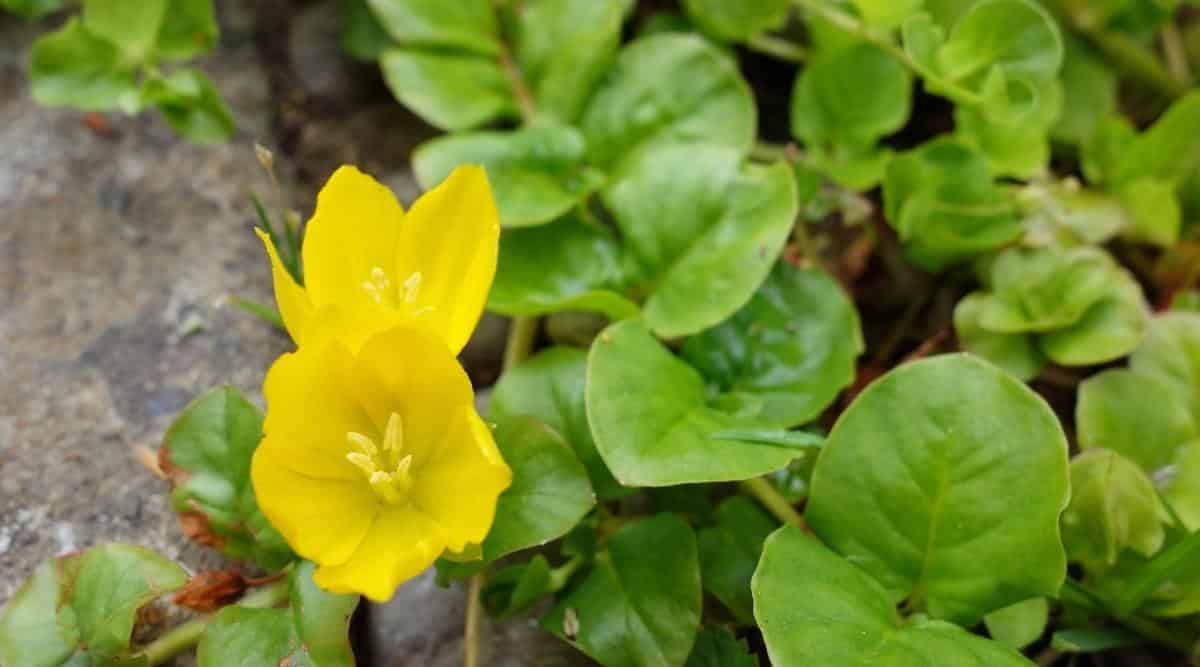
Creeping Jenny, or Lysimachia, is a vigorous ground cover that acts as a natural mulch for gardens, keeping the moisture in and the weeds down. It adds a layer of green at the base of peony plants. My favorite is golden Lysimachia which is a bright yellow color and really adds a pop of contrast to the even green peony foliage. It really adds a lushness to gardens.
Daylily
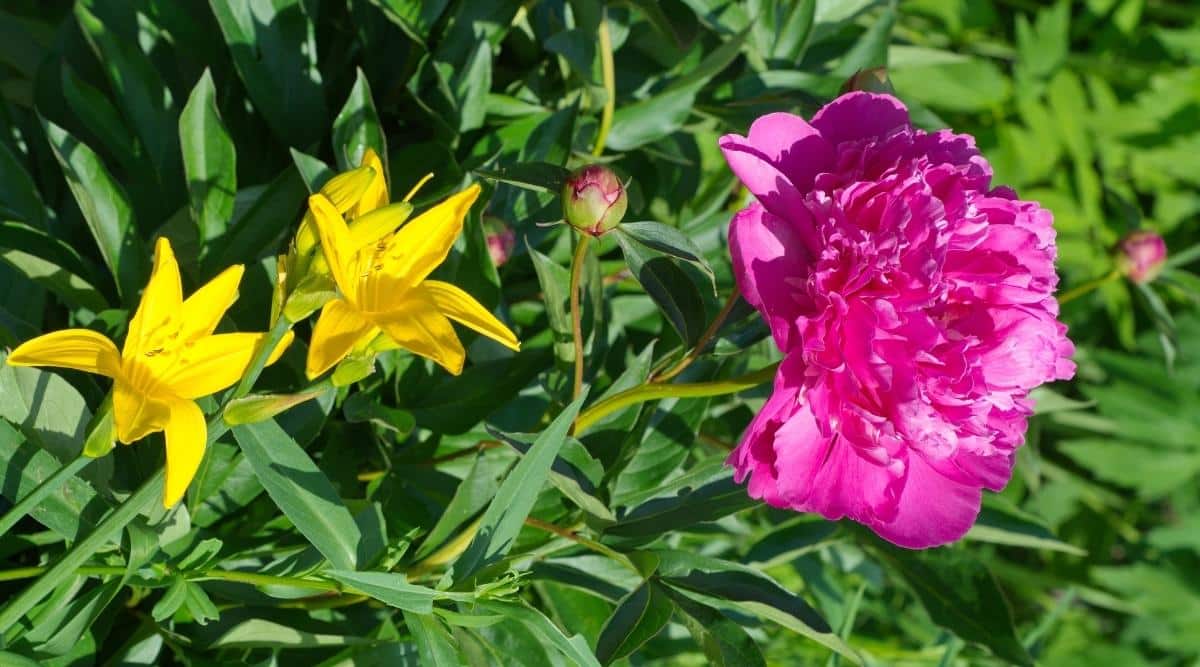
Daylilies make a great garden companion to many plants. Their grassy mounds of foliage add a soft texture to garden borders. They usually bloom slightly after peonies (although this is variety-dependent). So after the peony blossoms start to fade, the long stalks of daylily blossoms are ready to take over.
There are many unique varieties of daylilies available now. So if their orange color doesn’t suit your garden filled with soft pink peonies and light blue delphinium, try a soft pink variety of daylily. The ‘romantic rose’ daylily has large ruffly pink blossoms that fit in perfectly with a whimsical garden.
Hosta
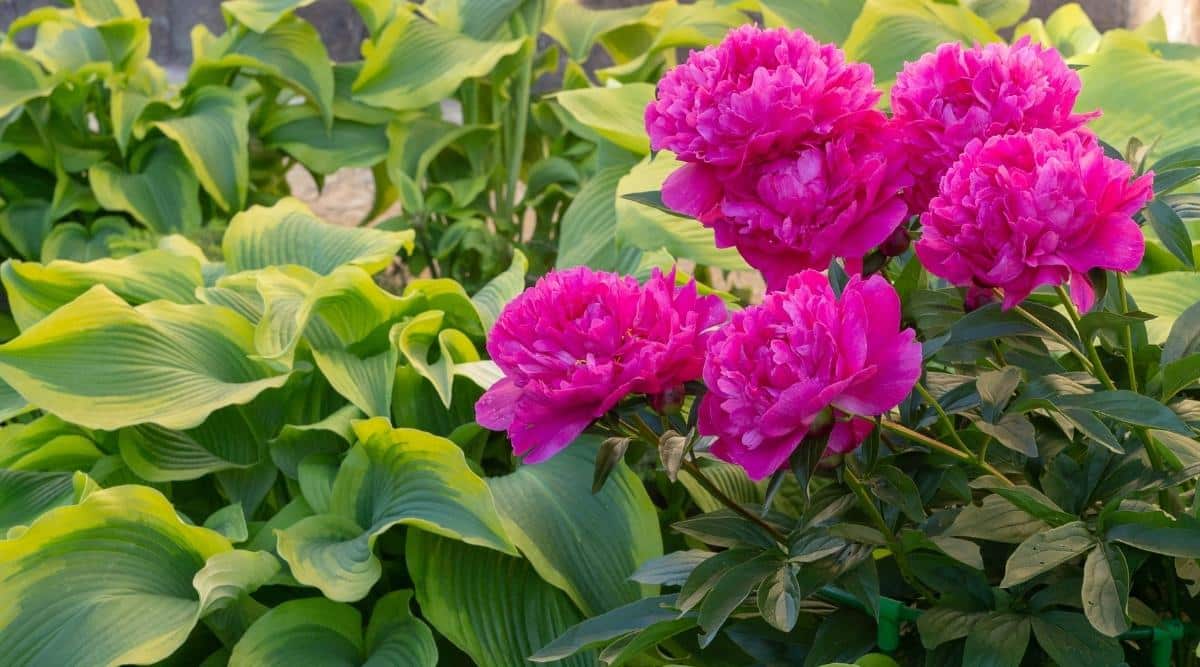
This combination may be a bit more unexpected since hostas are normally thought of as shade plants, whereas peony is the queen of the sun. But they actually can meet somewhere in the middle.
Hostas, especially the lighter green foliaged ones, can actually take a fair amount of sun. ‘Sum and Substance’, or ‘Dancing Queen’ are examples of lighter foliage hostas fit for the sun.








